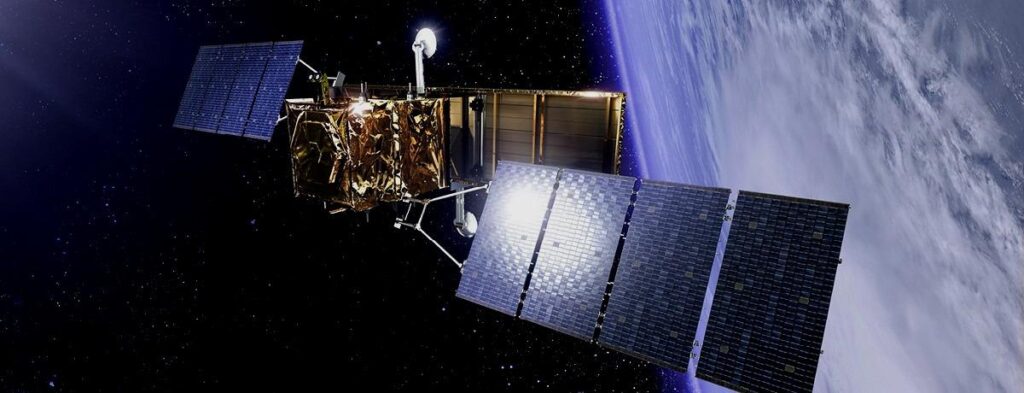A source has disclosed that an Italian satellite that is part of the COSMO-SkyMed constellation detected three floating objects on March 21, 2014, near where MH370 is believed to have crashed in the Southern Indian Ocean on March 8, 2014. This information was never publicly released.
The three floating objects were detected at 34.9519°S, 91.6833°E; 34.5742°S, 91.8689°E; and 34.7469°S, 92.1725°E.

The detections are significant because we know that a French satellite that is part of the Pleiades constellation detected what appears to be man-made floating debris on March 23, 2014, only 35 NM from where the Italian satellite had detected floating debris two days earlier. The French Military Intelligence Service shared four proximate images from Pleiades 1A with Geoscience Australia (GA) in March 2017, which then performed detailed analyses and determined that a cluster of nine objects that are probably man-made appear in one of the images near 34.5°S, 91.3°E. Australia’s Commonwealth Scientific and Industrial Research Organisation (CSIRO) then used this position information along with advanced ocean drift models to calculate the most likely point of impact (POI) to be 35.6°S, 92.8°E.
There is no definitive proof that either satellite detected floating debris from MH370. Our source also could not definitively state that there were no other floating objects detected near the 7th arc by these two satellites. However, the source believes that if there were other objects detected, they would have been shared with the MH370 search team.
The two satellites used different physical principles for detecting floating objects. The Pleiades satellite used optical sensors to capture images in multiple bands of color to achieve a pixel size of 0.5 m x 0.5 m. On the other hand, the COSMO-SkyMed satellites use Synthetic Aperture Radar (SAR) sensors to continuously scan the earth’s surface. Unfortunately, COSMO only obtained a wide-angle, low-resolution capture of the objects. On a subsequent satellite pass, attempts to capture the objects at high resolution were not successful.
Prior to 2014, researchers had already investigated using satellite SAR data to detect floating debris. For instance, in 2011, using SAR data from the crash of Air France 447 off the coast of Brazil in 2009, researchers presented a numerical method for processing the SAR data from COSMO-SkyMed to detect floating metallic objects. (HT Don Thompson.) Likely, those who have analyzed the COSMO data from March 2014 would know if the detected objects are metallic.
To determine if the objects detected by Pleiades and COSMO-SkyMed were from a common source, we used the results of a complex drift model (BRAN2015) developed by CSIRO and shared by oceanographer David Griffin. The results include the trajectories of 86,400 virtual drifters, representative of generic debris sitting flat on the surface. The virtual drifters start along the 7th arc on March 8, 2014, between latitudes 8°S and 44°S, and the trajectories are tracked for 1000 days. Our method was to find the two virtual drifters that best match the position and timing of the detections from the the two satellites. If those two virtual drifters started from nearby locations on March 8, likely the objects detected by the satellites came from a common source.
The results from the drift analysis are shown in the figure below. The yellow circles show the path of the virtual drifter that passed closest to the COSMO objects on March 21. The red circles show the path of the virtual drifter that passed closest to the Pleiades objects on March 23. These two virtual drifters start within 3.5 NM of each other on March 8, near to 35.4°S, 92.8°E. The proximity of the starting positions is consistent with a common source for the objects detected by the two satellites. That position is about 83 NM to the southwest of where a previous study estimated that MH370 crossed the 7th arc, and within the 140 NM radius recommended to search.

35.4°S, 92.8°S. (Click on figure to enlarge)
In order to better estimate the likelihood that these objects were from MH370, we pose the following questions:
- Were there other detections of floating objects along the 7th arc by Pleiades, COSMO-SkyMed, or any other satellites?
- Were the COSMO-SkyMed detections on March 21 determined to be metallic objects?
- Exactly what areas along the 7th arc were surveilled by Pleiades, COSMO-SkyMed, or any other satellites?
- Will Airbus (the operator of the Pleiades satellites) provide the images for each color band so that independent researchers can analyze the raw data? (HT Bobby Ulich)